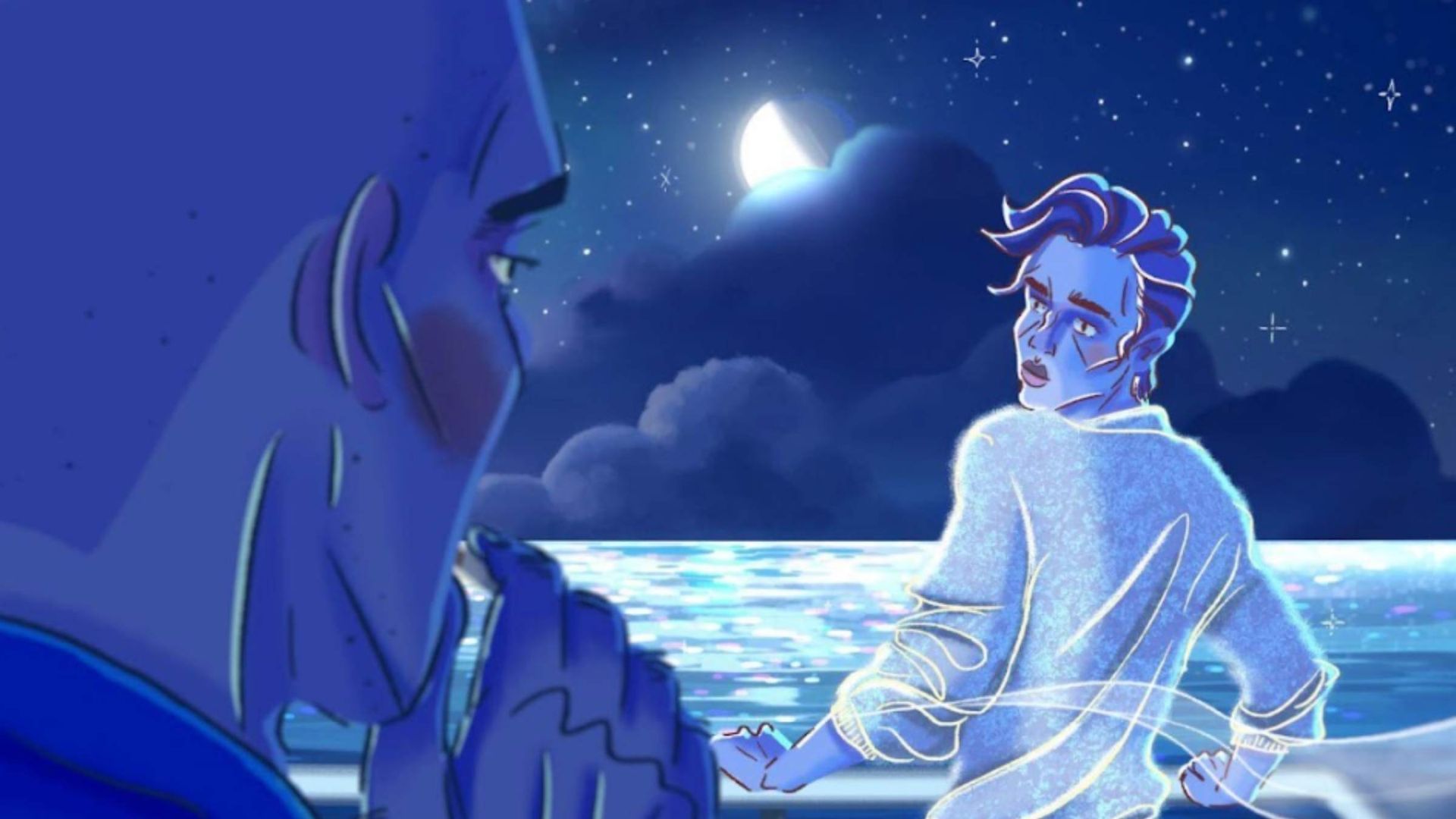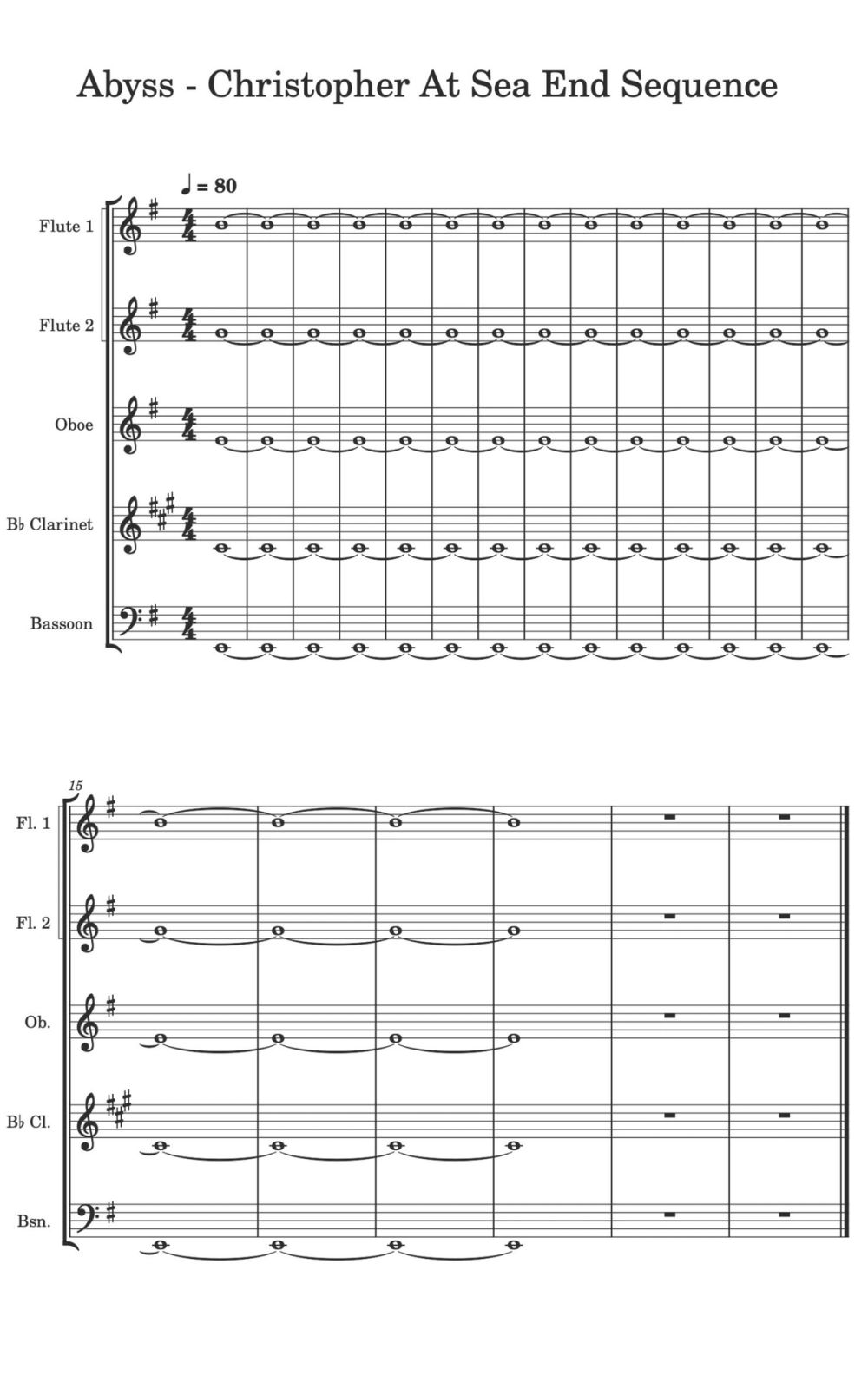Christopher At Sea
Tom Brown
We partnered with Tom Brown – one of our favorite collaborators – to create the sonic world for his animated film Christopher At Sea, which premiered at Venice Film Festival on September 9, 2022. Alongside composer Brian McOmber, Psyop, and Mr. Bronx, we brought Christopher At Sea to life with poignant, stirring, symbolic and often unsettling sound design.

The Ask
Christopher At Sea is a 20-minute animated short, described by Brown as “a queer operatic thriller," following Christopher aboard a cargo ship for a transatlantic voyage. An encounter with a crew hand, Valentin, sets the course for Christopher’s journey of solitude, fantasy, and obsession.
We had previously worked with Tom Brown on teeth (2015) and Cousin John - The Arrival (2020), so the team entered this project with both excitement and anticipation to see what kind of mind-opening, spine-tingling, outside-the-box spectacle Christopher At Sea would be. Sure enough, Tom did not disappoint. In addition to the story’s tense build-up and rich portrayal of Christopher’s perception of the world around him, the film offered a ripe canvas for creative uses of sound.
On the first time watching the rough cut with Tom Brown in October of 2021, our sound design team identified two major elements to get right in the film’s sound design. First was the recurring sonic motif of the engine room, which Tom referred to as the “beating heart of the ship," and the second was the finale, which brings the film to a fever pitch.
From start to finish, we produced sound design for Christopher at Sea over the course of 10 months, covering everything from ocean sounds, to water drops, to damp skin in the locker room. Here are the stories of the creation and production of the engine room rumble and finale sequence.
The Engine Room
The sound design process for the engine room began with researching the engine sounds of cargo ships as well as trips by our sound designers to the sea.
First, Zac did a detailed recording of a friend’s boat in Marina del Ray: “I spent a day opening up the engine room and mic’ing the dual diesel engines. We put the old engine through its paces, idling, revving, and trying to coax nuance and a diversity of sound.”
For further exploration, Bennett took a ride on New York’s Staten Island Ferry to collect a variety of sounds that would be foundational to the film’s sonic environment, and it was there that the engine room sound started to take shape. “On any boat that is powered by an engine, everything is vibrating, so we had to recreate this omnipresence of a main engine’s drone,” Bennett explains.“Christopher’s building psychosis is narratively tied to his interaction with the ship, so we reinforced that dynamic by accentuating the relationship between his own heartbeat and the ship’s ‘heartbeat’. The ship’s heartbeat was actually derived from an extremely loud and distorted recording of a vent in the stern of the Ferry.”
Bennett and Zac’s field recordings provided the basis for the engine room sound, which was embellished and polished in the studio to be more malleable and applicable to the variety of ways it was used in the film.

Bennett Eiferman captures sounds for the engine room aboard the Staten Island Ferry.
The Finale
The sound design for the finale went through many iterations before reaching its final form. With so much happening sonically at this point in the film, the team started by breaking down the scene into specific elements, with Zac and Rory specifically looking at the moments when Christopher was struggling underwater. “Growing up in Colorado,” Zac mentioned, “I spent a lot of time in white water. I used my experiences being swirled around large water to guide my sonic choices.”
Rory, who collaborated with Zac on these moments, pulled inspiration from similar memories: “Having spent the last two years totally obsessed with surfing the beach breaks of Lisbon, I channelled the oppression of being held down by a barreling Carcavelos winter wave.”
Over the course of a focused, iterative creative process, the team went through many explorations to get the finale sequence to perform exactly the way the film needed. “We tried a ton of different ideas for this scene,” Rory remembers. “Much of the sonic exploration we did before receiving the final animation didn’t make it into our final sound design.” The tides changed when the group had a chance to sit with the final animation.
“In the final week of production, we decided to record some wild sounds with a wind ensemble, using a simple score and some spicy playing direction. It ended up sounding pretty odd and helped to elevate the psychedelia in the animation.”
On top of the passages captured from the woodwinds session, the team also layered nearly 30 cello tracks on top of each other to make a really powerful and intense palette as the film builds toward its climax and Christopher’s situation becomes more grave.
Once all of the individual elements were completed, Bennett and Zac spent a week corralling these elements into one tasteful and dramatic amalgam that drives the culmination of the film.
We worked closely with the talented team at Bronx Audio as we approached the finish line to refine and perfect the sound design. Zac said, “The sonic world we were creating was finding its place all the way up to the final mix session with Dave Wolfe at Mr. Bronx. Dave’s fresh ears and fresh perspective were just what we needed to put the final few pieces into place.”

Sebastian Sack conducts a wind ensemble in Antfood New York’s live room. This recording contributed to the psychedelic and airy textures during the finale.


The Takeaway
We were incredibly fortunate to work with a partner as thoughtful as Tom Brown on this project. Beyond checking our work against the questions,“What would sound good?” or “What would sound realistic?”, Tom encouraged us to zoom out and ask the question, “How does this sound add meaning to the overall story?”.
Thinking critically not only about the sonic aspect of our work but also about the storytelling was an invigorating creative challenge that informed our entire process. Our own Christopher At Sea journey has encouraged us to bring a story-focused approach to not only sound design but all aspects of our craft–music composition, mix, voice-over, music supervision, sonic branding–for all styles of content, a refreshing reminder to constantly ask ourselves “How does this sound not only work from an aesthetic perspective but also contribute to the overall message, story, or goal of the project?”
Tags
Credits
Press & Awards
Best British Short (Nominee)
Animation Directing: Special Jury Award
Jury Special Mention
Best Animated Short
Best Animation
Mostra Internazionale d’Arte Cinematografica
Special Distinction

